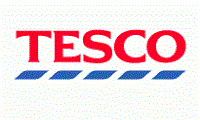As global chief marketing officer of newly enlarged NETSCOUT, Jim McNiel expects service providers like Tesco to be first to disrupt the market and maximise new digital revenues. Here McNiel tells Jeremy Cowan how they’ll beat mobile network operators to drive new digital services.
“Everything we do involves digital services as consumers. We found our way here today using Google Maps and we’ll pay for our coffees with credit cards,” says McNiel. All these service providers feel it’s their job to maintain the quality and availability of the network; you have to instrument all the main parts of the network so we can troubleshoot and fix things.”
“Now the CSP’s number one enemy is not the poorly educated or overworked engineer, it’s the hacker. That’s why we bought Arbor Networks which sells to 90% of Tier One service providers, and monitors 40% of the world’s network traffic. They’re going to provide advanced persistent threat technology based on the data layer. They won’t just use it for fault management or service triage but for everything. On top, they can mine data and improve performance,” McNiel adds.
I mention that ‘data monetisation’ is mentioned regularly in NETSCOUT’s promotional material.
“Yes, it’s front and centre for NETSCOUT in our roadmap,” McNiel replies. “It’s of extreme importance for people to develop a service assurance strategy. CFOs (chief financial officers) have always liked to talk about new revenues more than insurance policies. Now they want to know if they can collect revenues based on the value of data collected.”
Can McNiel give any examples of this new approach by customers?
“When someone spends thousands of pounds on new shoes at Harrods, American Express knows if you’re not there at Harrods. They can check with you if this is an authorised purchase.”
He also cites the importance of the Friends network, data mining to know who is in your circle of friends and getting customers to recruit new customers. “That trick turned LinkedIn into the power house it is today, and it did it really quickly. The hardest part of the question is finding the focus, which is why it’s easiest in a vertical space (an industry)”. For example, Vodafone should use the data NetScout collects so that when I’ve been surfing on the web and I’m out in the city it knows that data’s valuable to Chopard and Tag Heuer. They can send a message when I’m 100 metres from a store saying bring this code to us and get 10% off.”
“What we do is collect the data with software and hardware, then we organise the metadata layer and timestamp it, strip off the non-essential elements then make it available for mining, in case your top priority is reducing overloading in the network sector, or meeting SLAs (service level agreements),” says McNiel. “There are new opportunities to mine data and learn about customers. You don’t know where to go using your roadmap till you know where you are.”
It seems fair to ask why the likes of Vodafone don’t do that already.
“It’s what happens if marketing and telco guys don’t talk to one another. The Desktop Group is focused on managing Windows, the Networks Group is manging switches and routers, and Telephony is seeing PBXs going away.”

How can network operators bring all these divergent interests together?
McNiel smiles. “They need a common business outcome. I can tell them what data lives where and how it’s travelling. But are carriers thinking about services like outdoor advertising? Where do all those fans go after a game in the Rugby World Cup? How can pubs drag them into their ‘local’? Why aren’t they sending a message to all those leaving the ground suggesting they call in for a drink?”
Is it frustrating for NETSCOUT that potential customers aren’t talking internally across the silos of information and different disciplines?
“In the service provider sector, you’re right,” says McNiel. “Less so for enterprises. One problem is that AmEx doesn’t want a relationship with 15 different service providers, they should have a single point of contact to find out if Jeremy has his credit card in hand and is a Voda customer. Then they first one providing that information would get paid for it.”
How can NETSCOUT help to break these barriers down? Who do they talk to in the communication service provider?
“Our conversations are usually with the vice presidents of IT and Operations. We need to talk more to business development.”
I have to ask, what chance is there of these new services being rolled out if the telcos can’t even talk to each in the same ‘language’ internally?
“I’d start with someone like (supermarket retailer and MVNO) Tesco – they don’t think like a carrier, they think like a business. Like WalMart, they can be the data consolidation point, Tesco will know what you buy.” So it follows they have a lot to gain from knowing where you are.
Does the market need such disruptive players to develop these new services?
“Yes, dominators are not innovators,” says McNiel. I don’t know if that phrase is his, but it’s good. Lastly, he points to the flipside, “Innovators typically don’t have the scale to be disruptive.”
Our time is almost up. Clearly, NETSCOUT is following a different strategy to Danaher, previous guardians of the Fluke Networks, Arbor Networks and Tektronix Communications brands. Under Danaher these were distinct properties, now they will go to the major shows as NETSCOUT, although as McNiel says people will need to see both logos for a while. Expect the group’s primary focus to be on security, with software-defined networks (SDN), cloud and data monetisation also key.
Readers of VanillaPlus.com (www.vanillaplus.com), our sister title, will remember that in July 2015 NETSCOUT spent US$2.3 billion acquiring the communications assets of Danaher (see: NetScout completes Danaher telecoms business purchase) including Tektronix Communications, Arbor Networks and parts of Fluke Networks.
CLICK HERE to read Part 1 of Jim McNiel’s conversation with Jeremy Cowan, editorial director of VanillaPlus.com and M2MNow.biz










